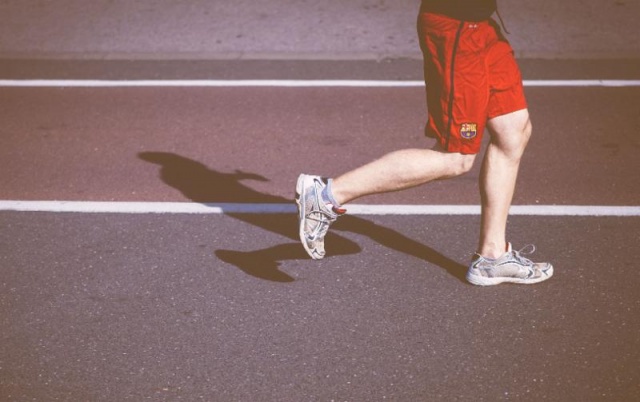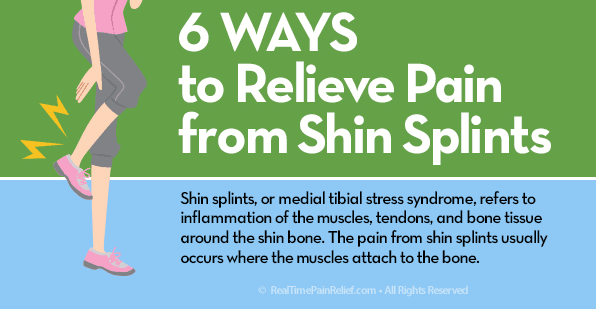 Shin splints can be caused by many different things. Some include overused muscles, stress fractures, weakness of stabilizing muscles or compromised lumbar spine function. Regardless of the cause, they are painful. The good news is there are several ways to prevent them before they become an issue!
Shin splints can be caused by many different things. Some include overused muscles, stress fractures, weakness of stabilizing muscles or compromised lumbar spine function. Regardless of the cause, they are painful. The good news is there are several ways to prevent them before they become an issue!
Some ways to prevent shin splints are:
1. Warm up!
Before you begin your workout, you must dedicate some time to prepare your muscles for the work they are about to do. This can be done by just walking a few laps leisurely and doing some dynamic stretching afterward.
Another great exercise to include in your warm up is toe curls.
- Standing hip-width apart on a towel, start with one foot and begin to gather the fabric by curling your toes.
- While you gather the fabric with your toes, pull it closer to you until you have gathered most of it.
- Return to the beginning and repeat the same motion on the other foot.
Also, once you begin your workout be sure to start gradually. During exercise, your shins have to bear up to six times your bodyweight. Be sure to be mindful of this when deciding what intensity to start with.
2. Stretch it out!
Stretching is crucial for your muscles to adapt to lengthening and strengthening. In the case of shin splints, it is most important to stretch your legs, especially after workouts. Tight calf muscles can put a lot of unnecessary stress on your shins in your everyday life. To correct this, you can use a foam roller to loosen up the backs of your legs and try different stretches, such as heel drops.
- Heel drops are performed by standing on a step facing towards a staircase, allowing your left heel to hang over the step’s edge behind you while keeping the toes on the higher step with your right foot.
- Bend your right knee to further drop your left heel until you feel a deep stretch in the back of your left leg.
- Hold and repeat on the other side.
3. Strengthen your hips!
Your hips play a huge role in the integrity of your foot position while walking. For example, strong hips prevent overpronation, which is when your feet turn inward as they push off the ground. Overpronation is a common walking style that often results in painful shin splints.
One simple exercise to strengthen your hips is side-leg lifts. These are performed with or without ankle weights, dependent on your fitness level, and can be done lying down or standing up.
- To perform these lying down, begin lying on your left side with your left arm supporting your head, and your right arm flat in front of you for balance.
- Bend your left knee for better balance and straighten out your right leg on top of it.
- Lift your right leg with your toes pointing up 5 times, and then 5 times with your toes facing down, to work your hip from various angles.
- Prepare the same position on your right side and repeat the process with lifting your left leg.
To do this standing up, simply stand on one leg and use that same arm to hold onto a sturdy surface and kick your straight leg out to the side and repeat.
4. Support your feet!
Your feet need ample support to prevent compromised walking patterns and further postural issues that may lead to shin splints. Arch support is the most important. There are experienced observers at shoe stores who can identify what shoe would work best for you by your gait. If more supportive shoes don’t do the trick, do not rule out adding an orthotic. Orthotics replace a shoe’s original foam liner and provide even more support for your foot.
Also, be sure to change out your shoes when it is appropriate. It is recommended to replace shoes approximately every 300 miles, or about every year if you are moderately active.
Related: Tips to Relieve Pain From Shin Splints
Check out our articles and infographics to learn a multitude of ways to start relieving your pain naturally!
At Real Time Pain Relief, we not only care about the quality ingredients that go into each and every one of our products – but also about the people who buy them. We hope this blog, and the articles posted on it, become a valued resource for your own personal journey to better health. We know natural products that reduce your pain at the source are important to you, and for more than 17 years, our Real Time Pain Relief rub-on has been providing fast acting, targeted pain relief with natural ingredients to thousands of satisfied customers. From the useful information on this blog to our high-quality natural products, we hope you become one of the thousands of customers telling us they “Enjoy Living Again!”
Sources for this post:
- http://www.runnersworld.com/the-body-shop/4-exercises-to-prevent-shin-splints
- http://www.mensfitness.com/training/cardio/9-ways-cure-and-prevent-shin-splints
- http://www.prevention.com/health/prevent-shin-splints
- http://www.webmd.com/fitness-exercise/shin-splints#1
- Log in to post comments


